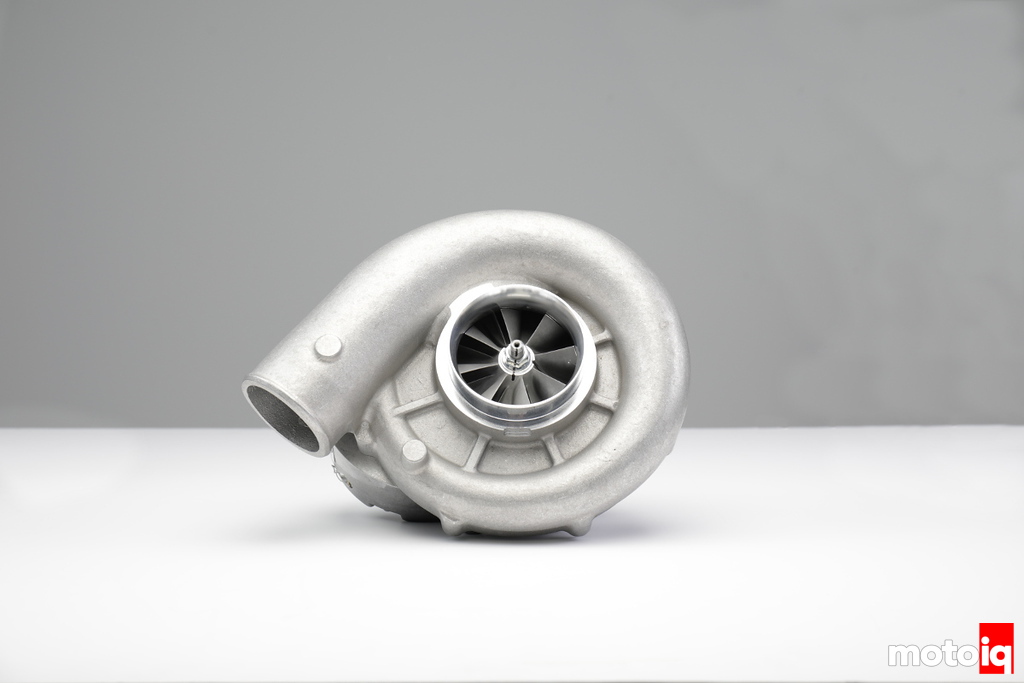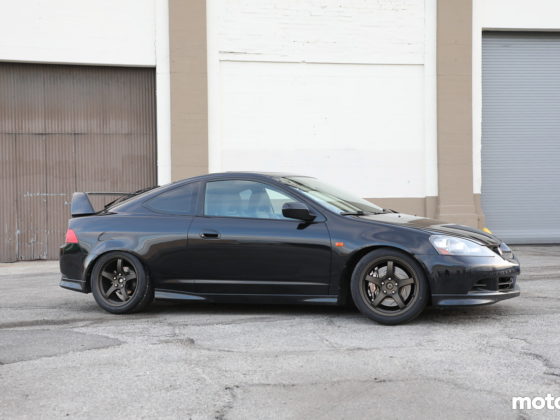Roots blowers vs. centrifugal superchargers
We found a whitepaper on Vortech’s website comparing roots style superchargers to centrifugal superchargers really informative. Of particular interest was an article in Road and Track ‘Corvette Fever.’ It compared the 2012 Corvette ZR1 with a roots style blower vs. the normally aspirated Z06. The ZR1 was actually slower down the straightest part of the track due to heat soak. This is despite the fact the ZR1 of the time should have made 133 more hp than the Z06 and that the straight line acceleration is where the ZR1 should have shined the most.

A roots blower makes power down low in the RPM range where traction is already an issue. Centrifugal superchargers make power that rises with the RPM of the engine. The interesting thing for those supercharging an engine with a stock bottom end is, the roots blower is adding more boost during the engines torque peak right wheen cylinder pressures are already at there highest point. This adds a decent amount of stress to the stock bottom end. The centrifugal blower is giving the most boost at higher rpm when the engines VE is falling off and the cylinder pressure is dropping. This subjects the bottom end to less peak engine breaking cylinder pressure. Centrifugal supercharges also tend to have higher efficiency as well which means less parasitic loss from the crank and less intake charge temperature.
Do your research and then do it again
We didn’t intend on a roots vs. centrifugal supercharger discussion; but it’s important to do your research when considering forced induction for any car. No mater what you end up choosing for your particular build understand the limitations of each choice you make. But, if your project path is entirely different it could invalidate many of the arguments we’re making here.
As a suggestion start with tuning shops that work on your particular car. Each shop will have their own preferences based on their experience. It would be best to call a few before making a multi thousand dollar investment. We did not take this advice at first and sifted through thousands of forum posts to find out some of these options no longer exist. Believe it or not we found some information on the internet is opinion only. With all this in mind we asked ourselves, how much usable power can we put down with 91 octane fuel?
Stillen partners with Vortech
Stillen has been in the business of making Nissans and Infinitis fast for decades. They in turn went to Vortech when they built their 50 state emission legal supercharger system for the 370z/G37. At the heart of the system Stillen uses the Sci trim of the V-3 supercharger. The Sci trim compressor is a more compact unit built for smaller displacement engines. This is the one that comes standard with Stillen’s supercharger kit. One of the remarkable achievements of the Vortech V3-Sci is that it achieves a turbo-charger like peak efficiency of 75%. With a maximum HP rating of 725HP at 17psi of boost, this may be plenty of power for your build.

Our conclusion the Vortech V3 SI supercharger
In the 9+ years since Stillen’s supercharger system was released there have been a lot of advances in terms of cooling the air charge and fueling options. These advances open up more potential for power on the stock bottom end. Vortech recommended the V3-Si trim supercharger as it will provide more pressure and cfm at the same impeller speed as the Sci trim. The Vortech V3 SI supercharger is commonly found on domestic V-8 supercharger systems. It has a peak efficiency of 78% with a maximum HP rating of 775HP and maximum of 22psi of boost. This increased compressor efficiency provides greater air density while robbing less power from the engine to drive the supercharger. Since there’s so much headroom left on the SI we won’t have to push it hard to make impressive power.





13 comments
Superchargers are just so neat, and not as popular as turbo charging as of late… Why is that? We need more article/project cars with superchargers. Looking forward to updates!
I personally would like to see an article with some sort of LSx powered drift car with one. Setups with air to water intercoolers, as well as some of the big block setups pushing 1000HP e.g. big iron drag cars.
Glad you liked the article! I’m looking forward to making more progress.
Our experience and exposure to various forced induction builds of course is subjective. There are a lot of reasons I chose to go down this particular path. The primary reason is that it was a proven path many had gone down before. I’ve gone down the other not traveled path and ran into headaches I didn’t want to deal with this time Turbo Sentra SE-R.
There has been enough learned since the time the original Stillen supercharger kit was developed to make some various upgrades like the supercharger compressor and air to air intercooler that seemed really interesting to me personally. I could have had similar discoveries down the turbo-charging path as well. There are a lot of forced induction options for the VQ37VHR just like there are for the LS motor. I was also drawn to the low noise of the Vortech V3-SI supercharger because of the low noise and the turbo-charger like peak efficiency.
I’m not trying to be evasive but you can build a turbo or supercharger setup to build power down low in the RPM range or up high if your shooting for huge power numbers. Again it’s a subjective choice. I was trying to find that sweet middle ground given that I’m forced to use 91 octane pump gas and I’m pretty much maxed out on a 10.5 inch rear tire to put that power down.
I’m not an engineer but generally speaking drift cars spend a lot of time at high RPM’s where turbo chargers are really spinning and make the most sense with all those exhaust gasses flowing. Those ‘big iron’ drag cars need to make immediate power off the line and that’s where those roots blowers really shine.
I don’t really like them for drift cars, not enough bottom end. Everyone who runs them in FD also has to run nitrous to improve the bottom end.
I feel centrifugal superchargers are much more suited for Renesis engines due to their aversion to backpressure and how choked the side exhaust ports are in general. Whereas it’s as if the old school 13B (non-Renesis) rotaries w/ their peripheral exhaust ports were made to be married w/ a turbo.
How come I rarely see any Rotrex builds? I love centrifugal supercharger but most builds I see that utilise them use a Vortech. Not knocking on Vortech of anything, I just wanna see a build employ Rotrex’s largest s/c; the C38R-112.
I’m more of an occasional lurker on the 370z forums only going there when I need to. I did read a few threads in my research phase about a company named GTM that was using a Rotrex centrifugal supercharger. It seems there was some trouble with customers getting their kits built or maybe it was just people on the internet complaining. Sorry I can’t be more helpful but I’d rather not insert myself in other’s battles.
The three companies I looked at that offered air to air intercooler kits for supercharging the VQ37VHR all use the vortech supercharger. I went with Vortech since it has been done many times before both with these air to air supercharging systems and the Stillen air to water supercharger kit.
Hmm, I guess it mostly just comes down to the availability of kits for the application in question, which Vortech seems to have the advantage in that regard. That’s a shame cuz I think the Rotrex units are very well engineered, especially its drive system. If only more people would do custom builds instead of just buying kits. I get that it’s the easier path to take and is a proven solution in many cases, but u learn so much more going thru the process of designing and fabricating a FI build from scratch imo.
Top gunz new supercharger kit runs the cr38 rotrex coming soon 😎
Nic,
Being the nerds we are here we went pretty far down the rabbit hole of Forced Induction for the VQ37 before pulling the trigger. I do remember there was a company (now defunct) who did end up going with a rotrex supercharger that I read about on the 370z/G37 forums. I do kinda hate forums at times though because more often than not in order for one thing to be good the other has to completely suck. Then the debates ensue for one argument vs. another. I did end up talking to Top Gun (I think his name is Aaron) early on and at the time he didn’t have a kit for the sedan like our project. He seems like a stand-up guy and other people in the business for selling parts in the automotive aftermarket held his work in high regard. We’re not done with our project yet. It just got put on pause like many things did with COVID.
I was going to get the Soho a2a kit but now everyone is waiting for top guns dyno run in a few days to see how his new cr38 kit will do, I’m in Australia and it’s so much cheaper to buy from the USA , over here 99.9999% of people just do intake and exhaust and call it a day on the 370z so most workshops don’t want to deal with you unless you shower them in cash
that ought to be interesting since I’m sure he has other dyno charts to compare from the old kit.
I’m curious to try and fit a larger air filter on our project because all of the air-to-air kits I’ve seen use the small harley davidson air filter. I just don’t feel comfortable running a turbo guard on a street car in dusty Phoenix.
I’m with you on the filter
Thats another nice touch to the the new rotrex kit from Aaron it utilises a large k&n without any restrictions in the intake pipe
I tried looking for information on it after your last comment and it didn’t look like the kit was publicly available yet. Now I can see it there.
https://www.topgunspeedworks.com/nissan-370z-parts
There’s an awful lot going on in that wheel well already. I need to get the help of a fabricator so I can pound my chest with an air filter on 😉